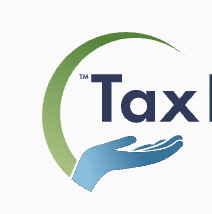
On July 4, 2025, President Trump signed the "One Big Beautiful Bill Act" into law, eliminating federal taxes on Social Security benefits, tips, and overtime pay while increasing standard deductions to $15,000 for single filers and $30,000 for married couples.
"For individuals, double-check your tax withholdings—the increased standard deduction and exemptions mean many taxpayers could have too much withheld from their paychecks," says David Kindness, CPA and Founder of Your Creative CPA.
This comprehensive guide examines how the new tax law affects your finances and provides actionable strategies to optimize your tax situation. For personalized guidance navigating these changes, our best tax relief services can help you maximize benefits under the enacted policies.
Key Insights
- The One Big Beautiful Bill Act increases long-run GDP by 1.2 percent while reducing federal revenue by $4.1 trillion over 10 years.
- New tax exemptions eliminate federal taxes on Social Security benefits, tips, and overtime pay for qualifying taxpayers.
- Standard deductions increase to $15,000 for single filers and $30,000 for married couples filing jointly for the tax year 2025.
- Universal tariffs of 20-60% may offset some tax savings through higher consumer prices on imported goods.
What's Now Law: The One Big Beautiful Bill Act
The One Big Beautiful Bill Act, signed into law on July 4, 2025, makes sweeping changes to the federal tax code. According to the Tax Foundation, the law will increase long-run GDP by 1.2 percent and reduce federal tax revenue by $5.0 trillion from 2025-2034 on a conventional basis, with dynamic effects reducing the revenue loss to $4.1 trillion.
TCJA Provisions Made Permanent
The law permanently extends the current tax bracket structure, keeping the top rate at 37% instead of reverting to 39.6%. The IRS has announced the following tax brackets for 2025:
Tax Rate | Single Filers | Married Filing Jointly |
10% | Up to $11,925 | Up to $23,850 |
12% | $11,926 - $48,475 | $23,851 - $96,950 |
22% | $48,476 - $103,350 | $96,951 - $206,700 |
24% | $103,351 - $197,300 | $206,701 - $394,600 |
32% | $197,301 - $250,525 | $394,601 - $501,050 |
35% | $250,526 - $626,350 | $501,051 - $751,600 |
37% | Over $626,350 | Over $751,600 |
Increased Standard Deductions: For tax year 2025, standard deductions are set at $15,000 for single filers and $30,000 for married couples filing jointly, representing increases of $400 and $800, respectively, from 2024 levels.
$2,000 Child Tax Credit: The enhanced Child Tax Credit continues permanently, providing up to $2,000 per qualifying child under 17.
New Tax Exemptions Now in Effect
Elimination of Social Security Taxes
The law eliminates federal income taxes on Social Security benefits for all recipients. According to the Tax Policy Center, this change reduces federal revenues by $1.5 trillion over ten years and provides significant relief for retirees who previously paid taxes on these benefits.
"The elimination of Social Security taxes can be considered a significant win for retirees, effectively increasing their after-tax income immediately. However, for those still working, this change can have a significant impact on retirement income strategies," says Kindness.
Key Retirement Planning Changes
Traditional strategy: Retirees would often draw from taxable accounts (brokerage accounts, 401(k)s, traditional IRAs) first so tax-advantaged accounts could continue growing
New strategy: There's now a much stronger argument for delaying withdrawals from tax-deferred accounts, in favor of untaxed Social Security instead
Future flexibility: Retirees can potentially take larger distributions from their IRA later in life at potentially even lower effective tax rates
Recommendations for Current Workers
"Current workers should strongly consider contributing to Roth accounts like Roth IRA or Roth 401(k) now, while their tax rates may be lower, to create a pool of tax-free income to draw from in retirement to complement their tax-free Social Security benefits," Kindness advises.
"It's generally a good idea to diversify your tax strategy, so consider contributing to tax-deferred accounts like 401(k)s and traditional IRAs as well, in case your income in retirement is different than you expect."
Tax-Free Tipped Income
Workers in hospitality, restaurants, and service industries no longer pay federal income taxes on tips received. This provision is temporary, expiring in 2028.
Who benefits: According to The Budget Lab at Yale, there were roughly 4 million workers in tipped occupations in 2023 who could benefit from this provision.
Savings example: A server in a metropolitan area working full-time and earning an average of $500 per week in tips would save approximately $3,120 annually (assuming they fall in the 22% tax bracket).
Tax-Free Overtime Pay
Overtime wages are now exempt from federal income taxation, encouraging longer work hours and providing additional income for hourly workers. This provision is also temporary, expiring in 2028.
Who benefits: According to the Bureau of Labor Statistics, manufacturing workers averaged 2.8 overtime hours per week in July 2025, indicating millions of American workers regularly earn overtime pay that would benefit from this exemption.
Savings example: A warehouse employee earning $30 per hour who works an average of 10 hours of overtime each week at time-and-a-half ($45/hr) would save roughly $2,340 per year (assuming a 22% bracket on $10,800 of overtime income).
Important note: Both the tipped income and overtime pay exemptions are temporary and expire in 2028. Workers should plan for this income to become taxable again if the law is not extended.
Business Tax Changes
Reduced corporate tax rates: The corporate tax rate drops from 21% to 20% generally, with US manufacturers qualifying for an even lower 15% rate to incentivize domestic production.
Enhanced business deductions: The law makes permanent several business tax provisions, including 100% bonus depreciation and research and development expensing, providing greater certainty for business investment planning.
Economic Impact and Distributional Effects
Who Benefits Most
The new tax law affects different income groups in very different ways. According to the California Governor's office, starting in 2029, Americans earning $30,000 or less annually would actually see tax increases, while the wealthiest 0.1 percent would receive an average annual tax cut of $309,000.
Here's how different groups benefit:
Middle-class families: Continue saving money from extended tax cuts.
High-income earners: Get the largest benefits from permanently lower tax rates.
Service workers: Immediately benefit from tax-free tips and overtime (until 2028).
Retirees: Save significantly from eliminated Social Security taxes.
The Temporary vs. Permanent Problem
"The tax breaks that help working-class Americans, like tax-free tips, overtime pay, and Social Security income, are scheduled to expire in 2028. This creates a future tax increase for the people who need help most," explains Kindness.
"Meanwhile, the tax cuts for higher earners are permanent. The 37% top tax rate and expanded estate tax exemptions will provide long-term savings on both annual income and wealth transfers to the next generation," he adds.
Economic Growth Projections
"These changes should boost economic growth in the short term by putting more money in people's pockets for investing and spending. However, the long-term impact will be smaller once the working-class benefits expire in 2028," Kindness explains. "The decreased tax revenue may also contribute to higher federal debt and interest costs, creating future fiscal pressure."
Tariff Implementation and Consumer Impact
Tariffs act as a consumption tax by raising the cost of imported goods, which typically leads to higher prices for consumers. The financial impact is greater on lower and middle-income households, as they spend a larger share of their income on essentials like food, fuel, and clothing, resulting in a heavier relative burden, explains Kindness.
Apart from tax legislation, the Trump administration’s tariffs are expected to generate revenue but may offset some tax benefits with increased consumer prices. The Tax Foundation projects these tariffs will raise $2.1 trillion from 2025 to 2034 while reducing US economic output by 0.8%.
Current Tariff Structure:
20% universal tariff on imported goods
60% tariff on Chinese imports
Additional targeted tariffs on specific industries
Regarding the interaction between tariffs and tax changes, Kindness notes that the net financial effect on households depends on the balance between tax savings and higher consumption costs.
High-income households may benefit as their tax savings from permanent rate reductions could exceed increased tariff-related expenses. Conversely, median-income households may find that modest tax savings are offset by higher costs, potentially neutralizing any net benefit.
Federal Deficit and Fiscal Impact
Budget Implications
The Tax Foundation estimates the law will increase budget deficits by $3.0 trillion from 2025 to 2034 before interest costs, with additional interest payments of $725 billion bringing the total deficit increase to nearly $3.8 trillion.
The law includes nearly $1.1 trillion in spending reductions to offset some of the revenue losses. The California Governor's office further notes that these cuts significantly impact programs and services that everyday families depend on, including:
More than 11 million people are newly uninsured nationally due to healthcare cuts.
3 million people nationwide are losing food assistance.
686,000 California jobs at risk from elimination of clean energy tax credits.
$545 million cut from the FBI, reducing the workforce by over 2,000 personnel.
Reduced access to student financial aid, including Pell Grants.
Long-term Fiscal Concerns
The Congressional Budget Office projected annual deficits rising from $1.9 trillion today to $2.5 trillion by 2035. The law (OBBB) is expected to cut federal revenues by around $4.5 trillion and increase spending by about $325 billion, says Kindness.
After $1.4 trillion in planned spending cuts, the net deficit growth is roughly $3.4 trillion before interest, rising to about $4.1 trillion including $725 billion in debt costs.
This fiscal outlook raises concerns about higher federal interest payments, increased inflation from money printing, worsening the already large deficit, and a weaker dollar.
How to Optimize Your Tax Strategy Under the New Law
Immediate Actions for 2025
Review your withholding: With the new law in effect, evaluate whether your current tax withholding aligns with the new rates and exemptions, particularly if you receive tips or overtime pay.
Maximize new benefits: If you're eligible for the Social Security tax exemption, tip income exemption, or overtime pay benefits, understand how these interact with your overall tax situation.
Business planning opportunities: Small business owners and manufacturers should evaluate how the new corporate rates and enhanced deductions affect expansion and investment decisions.
Long-Term Planning
Retirement strategy updates: The elimination of Social Security taxes fundamentally changes retirement income planning and optimal withdrawal strategies from retirement accounts.
Estate planning adjustments: The estate tax basic exclusion amount increases to $13,990,000 for 2025, up from $13,610,000 in 2024, affecting high-net-worth estate planning strategies.
Investment timing: Consider how the permanent nature of most provisions affects the timing of major financial decisions, particularly for business investments and retirement planning.
Expert Tax Planning Recommendations
Kindness provides his top three actionable recommendations:
Conduct a mid-year tax projection: Consider analyzing your financial situation - and your tax situation - right away to see the net effect of the tax cuts minus the impact of tariffs on your spending. Adjust your W-4 withholding and estimated tax payments to stop overpaying, if necessary.
Emphasize both conversions and contributions: The combination of permanent lower tax rates and future tax-free Social Security income makes paying taxes today, and not in retirement, an even more attractive strategy. Consider partial Roth IRA conversions if you are in a lower-than-expected tax bracket.
Business owners should revisit their entity structure: The new 15% rate for manufacturers and 20% general corporate rate may make electing S-Corp status less advantageous for some businesses than traditional C-Corp status. This is a complex calculation involving double taxation vs. pass-through income, so consider contacting a CPA/tax professional.
Frequently Asked Questions
When do these tax changes take effect?
Most provisions took effect January 1, 2025, with the law signed on July 4, 2025. Some administrative changes may require additional implementation time.
Are all the tax cuts permanent?
No, while most TCJA extensions are permanent, the tip income and overtime pay exemptions expire in 2028, and some business provisions have different timelines.
How do I qualify for the tip income exemption?
The exemption applies to tips received by workers in service industries. Specific eligibility requirements and reporting procedures should be confirmed with a tax professional.
What happens to my Social Security taxes?
Federal income taxes on Social Security benefits are eliminated, but Social Security and Medicare payroll taxes continue to apply to wages.
How will tariffs affect my household budget?
Tariffs function as consumption taxes that increase prices on imported goods. The impact varies based on your consumption patterns and income level.
Should I change my tax planning strategy?
Given the significant changes, as a taxpayer, you should review your tax strategy with a professional to ensure they're maximizing benefits under the new law.
Conclusion: Navigating Trump's Tax Changes
The One Big Beautiful Bill Act is the most significant tax legislation since the Tax Cuts and Jobs Act, affecting individuals, businesses, and the federal budget. While it offers significant benefits, its complex provisions create both opportunities and challenges. To navigate these changes successfully, it’s essential to understand how they apply to your unique situation and take steps to optimize your tax strategy.
Kindness points out, “The OBBB introduces complicated and sometimes controversial changes. Its impact varies based on individual or business circumstances, and when combined with new tariffs, tax planning becomes even more challenging.” He stresses, “Proactive planning—such as understanding tax bracket changes, maximizing deductions, and using exemptions for tip, overtime, or Social Security income, is key to getting the best financial outcome.
Methodology
Expert verification: All tax analysis and recommendations in this article have been reviewed by David Kindness, CPA, and Founder of Your Creative CPA, for accuracy and practical applicability. Expert insights reflect real-world experience in tax planning and professional knowledge of the enacted legislation's implications.
Industry statistics: Tax impact data and projections are compiled from the Tax Foundation, Congressional Budget Office, Tax Policy Center, and other authoritative sources. All estimates reflect the enacted legislation rather than proposed policies.
- Verification process: All claims about the enacted law have been cross-referenced with official government sources and industry analyses. Cost estimates and savings calculations represent typical outcomes and should be considered estimates rather than guarantees.



